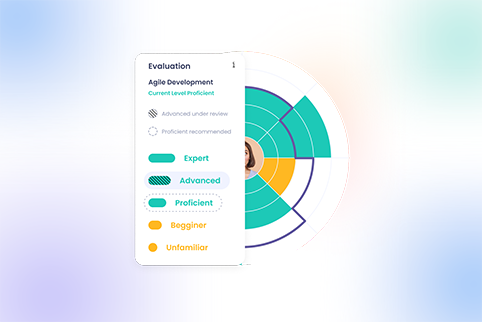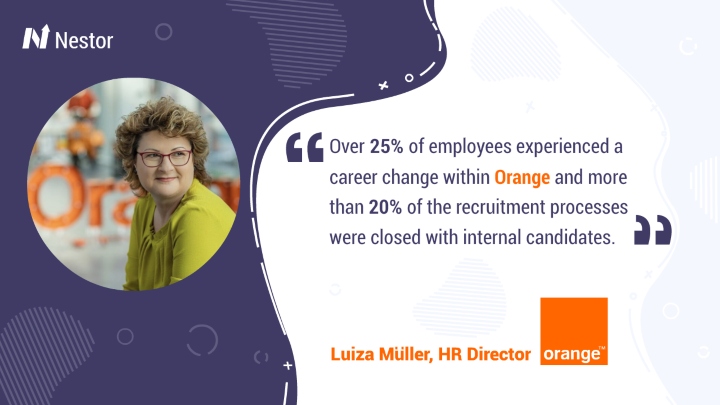
Employee surveys are powerful tools to assess your people’s feedback and understand their needs. In part one we covered several ideas of surveys worth trying to gauge your employees’ experience and wellness. Hence, we mentioned:
- pulse surveys especially for mood evaluation
- wellness assessment
- onboarding assessment
- candidate feedback
- eNPS
As follows, in part two we’ll dive into surveys to take the pulse of employees effectiveness and development.
Career development through skills analysis assessment
To be ready for the future of work we will most probably have to constantly reinvent ourselves. Reinvention means learning new skills, relearning and unlearning something that is no longer useful. Hence, the role of organizations in these disruptive times is a crucial one. In other words, companies have the responsibility to help employees to constantly grow and develop. Avoid putting people in a box and help them develop real-world competencies.
Once you’ve mapped and defined critical skills needs and identified the desired level of competency for each, assess the current level of proficiency of existing skills. Here’s where surveys will help you. Create real-world (relevant to the company) 3-5 tasks to assess the required skills.
Then, to assess the general level of competency (within the team or the whole company) gather the answers in a survey-like questionnaire. This will also help you have all the answers in one place, making it easier to analyze and map the data and then draw conclusions on what development plans to create.
Employee surveys to build 360 feedback assessments
When designed properly, 360-degree feedback assessment is a valuable tool for continuous learning and development. For instance, it invites the receiver to become more self-aware and reflect on the input collected.
In 2001 Harvard Business Review published an article on how to get 360-degree feedback right. Hence, the research presented there concluded that peer appraisal is not the easiest thing to do and four paradoxes immerse:
- The Paradox of Roles: Feedback received might be distorted as preserving the relationship is more important rather than jeopardise it in case the feedback is wrongly interpreted.
- The Paradox of Group Performance: Cultivate the sense of shared responsibility and ownership. Otherwise you can compromise the group’s performance.
- The Measurement Paradox: To make your 360-degree easy to act on, use qualitative questions, asking the respondents for details and specific examples supporting the rating.
- The Paradox of Rewards: If not tied to rewards, feedback might be more comprehensive and detailed. However, the respondents might also delay answering it.
To build or not the 360-degree feedback assessment then?
Designing a 360-degree feedback assessment will take time and effort. However, knowing what might go wrong, you can minimize the pitfalls. By also knowing your team will make this decision easier. One suggestion to try is making it anonymous and optional.
In other words, treat your employees like adults and leave them to decide upon the feedback they just received, whether they want or not to disclose it. Offer your support and be close to them, observing and making sure they are handling their feedback well.
In case you’ve decided that 360-degree feedback assessments are suitable to your team and company, begin by articulating your purpose and strategy. What are you planning to achieve? Then, make sure your team understands the purpose and what will happen with the outcome – their development.
Action-effect employee surveys for management efficiency
Action-effect surveys are great to gather feedback on how one’s behavior is mirrored and perceived by others. These assessments will help you gauge, for example, your managers’ efficiency or progress in a leadership program.
Action-effect surveys turn the perspective towards how team members are feeling when their manager does something. In other words, if the manager takes time to continuously learn and encourages their team to do the same by creating a proper and safe space for reflection, curiosity etc., most probably his/her team members will do the same.
For instance, observing these gaps (between how the manager rated himself/herself and team’s perception) you’ll be able to be more targeted and act upon skills and competencies that really matter for the team and the company.
In this article we described the process of how to design action-effect surveys, focusing on the example of becoming a great leader.
Employee job satisfaction surveys
Happy employees have more energy to take care of your business. Additionally, once they feel happy when working for your company, they will stay longer with you. Design your questionnaire with the purpose of understanding your employees satisfaction level and identify ways of improving their experience. A well designed job satisfaction survey should focus on how satisfied your team is in relation to:
- career development opportunities
- clarity of job responsibilities
- access to resources
- how meaningful their work is
- is their wellbeing affected
- how collaborative their work is
For instance, here are some questions or statements you might play with when designing a survey the purpose of which is to understand and then improve your employees job satisfaction level:
- My company and role offer me opportunities to develop and grow.
- My manager encourages me to take on new responsibilities.
- On a scale from 1 to 5 how satisfied are you with your daily activities?
- What are the top 5 activities that drain your energy?
- What are the top 5 activities that energize you?
- Sometimes I don’t have access to important resources to do my job well.
- I understand and see the impact of my contribution to the team and company.
Final thoughts
Employee surveys are great to help you collect data. However, they will not make wonders unless you take the time to design and customize them to your team and company’s needs. And then take action by creating personalized initiatives that will improve your employees journey and encourage them to genuinely participate at future surveys.







